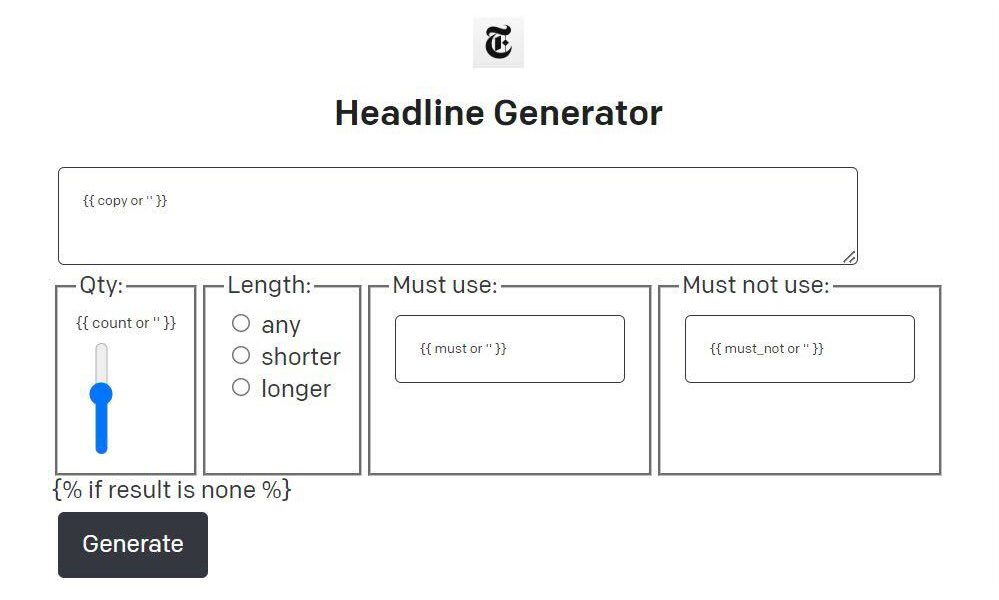The New York Times has found itself in a complicated situation regarding its relationship with OpenAI. On one hand, the newspaper has filed a lawsuit against the artificial intelligence startup, along with Microsoft, accusing them of scraping articles without permission or compensation. The Times is seeking billions of dollars in damages from both companies. However, on the other hand, the newspaper has also been utilizing OpenAI’s generative AI technology for its own purposes.
The Times’ use of OpenAI’s technology was revealed through leaked code that showed the development of a tool to generate headlines and apply the newspaper’s style guide. Normally, these tasks would be carried out by human editors. The Times spokesperson, Charlie Stadtlander, clarified that this project was an early experiment to explore the potential use cases of generative AI and was not implemented in the newsroom. The Times continues to experiment with AI applications for the benefit of its journalists and audience.
The use of artificial intelligence in newsrooms is becoming increasingly common, with AI being employed for tasks such as sorting through large data sets. However, there have been instances where public-facing uses of AI have resulted in embarrassment for media outlets. Sports Illustrated had to delete AI-generated posts from its site after readers exposed that some of its authors were AI-generated. Similarly, the British tabloid Daily Mail published an AI article mistaking a Saturday Night Live satire for real news.
While some newsroom applications of AI are kept under wraps, others are publicized by media outlets. Newsweek, for example, announced a broad embrace of AI without providing many details. The New York Times, like other outlets, openly acknowledges its use of AI in journalism. The paper’s Research and Development team states that AI intersects with their reporting, editing, and engagement with readers. However, the specific project involving the style guide and headline generation is not listed among the 24 use cases of AI highlighted on the Times’ website.
The skepticism surrounding AI in newsrooms stems from concerns about its regurgitative nature and the potential loss of journalist jobs. The media industry has already experienced significant job cuts, with over 20,000 positions lost in 2023. In 2017, the Times eliminated its copy edit desk, which was responsible for enforcing the style guide. This task was one of the areas the publication tested with AI.
The New York Times’ code became public when an anonymous user shared a link to a collection of the newspaper’s GitHub repositories on the 4chan bulletin board. The leak contained over 6,000 repositories and more than 3 million files, primarily covering the engineering side of the Times. The authenticity of the leak was confirmed by the newspaper, stating that the code was inadvertently made available in January.
The Times’ lawsuit against OpenAI and Microsoft for copyright infringement has cost the newspaper $1 million. Additionally, The Intercept is involved in a separate lawsuit against both companies under the Digital Millennium Copyright Act.
One of the New York Times’ AI projects, called “OpenAI Styleguide,” utilizes OpenAI’s large language model, Davinci, to correct errors in headlines, bylines, datelines, and article text that violate the Times’ style guide. The project also includes a headline generator that prompts the OpenAI bot to generate three sober and sophisticated news headlines based on the first three paragraphs of a given story. The leaked code also includes a separate headline generation project using an OpenAI chatbot called ChatGPT.
In addition to these projects, the Times’ GitHub leak contains source code for various applications, including research projects, technical job interview test questions, staff training materials, prototypes for unreleased games, and personal information.
Overall, the New York Times finds itself in a complex situation as it sues OpenAI while simultaneously experimenting with the company’s AI technology for headline writing and copy editing. The use of AI in newsrooms continues to evolve, with both benefits and challenges. While AI can streamline certain tasks, there are concerns about job losses and the potential for AI-generated content to mislead readers. The leaked code from the Times’ GitHub repositories sheds light on the newspaper’s AI projects and provides insight into their experimentation with AI technology.


